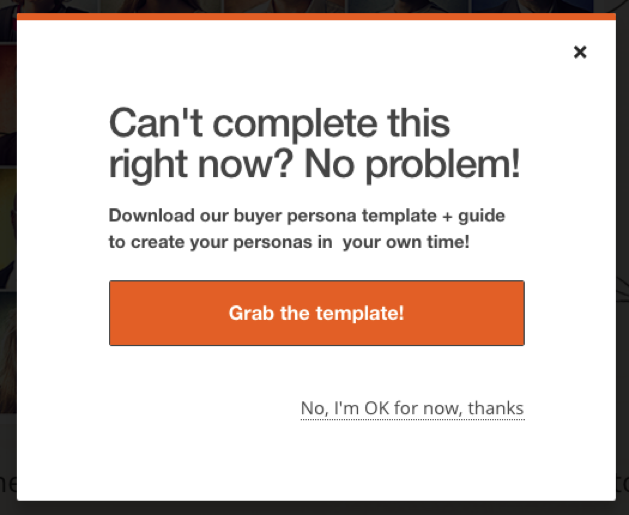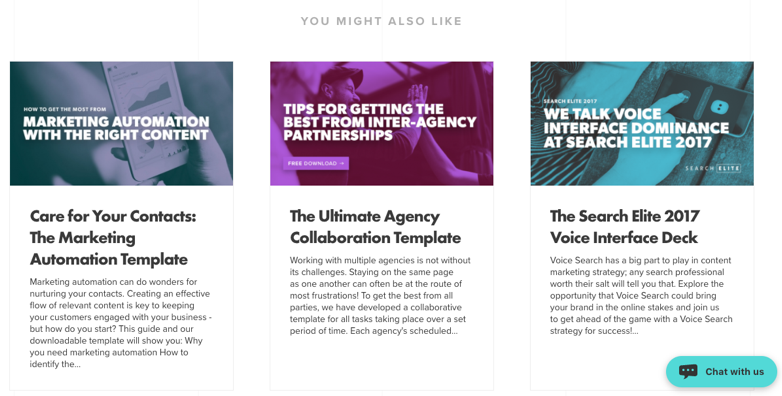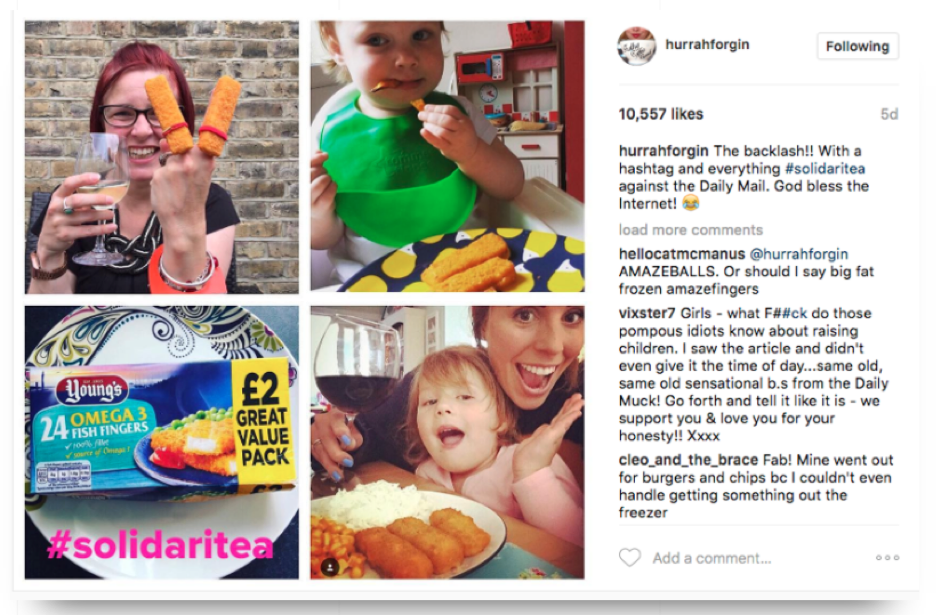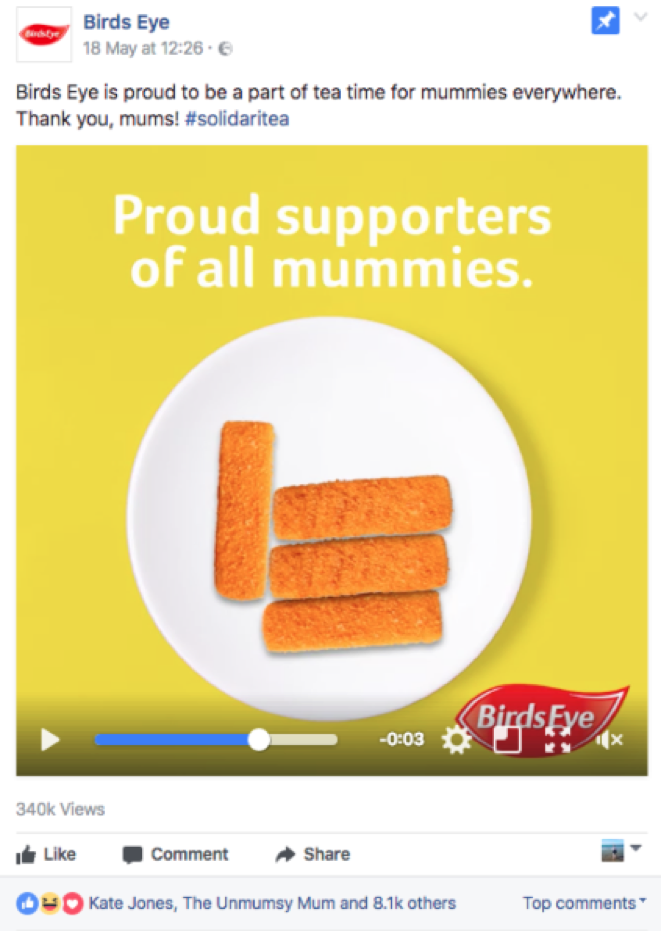It’s time for an update on how to strategise marketing activity for the coming 12 months.
This year may have delivered your marketing target, but any marketer worth their salt will know that keeping the exact same marketing strategy for the year ahead is not an option!
To be the best in the travel industry, your brand must iterate as your market does too, which means creating a plan for how to meet your customers' demands not just now, but for 12 months’ time too. Now, no one expects you to own a crystal ball (although this would be handy - think of the trends you could jump on!), but by using data and taking a little insight from industry experts, you can make a good stab at forecasting activity and budget. And let’s not forget, your marketing plan should be a working document subject to change at least every quarter. No one can expect perfection first time around so get out there and learn from your mistakes.
So to start with, we need to make sure you’re looking at the focus areas which really matter to a growing brand. We suggest these three to start:
1. Creating value for customers
2. Building consumer trust
3. Delivering a good product or service that will convert into repeat business
In this post we are going to guide you on how your focus areas (above) translate into practical digital marketing objectives in a competitive industry - we will be using the travel sector as an example! We’ll provide you with some practical tips to take away and put into your plans for 2018, not to mention name dropping some really useful tools which are yours to bookmark!
What do you want to achieve?
First of all, map out your yearly business objectives against your marketing objectives and make sure they align. This is the most important place to start as this ‘meeting of minds’ is essential for reducing the risk of an unwanted surprise 12 months down the road when objectives aren’t hit and your boss is far from impressed. It’s essential to have the buy-in of senior members of the organisation so that your wider operational marketing plan is understood by those driving the business. If your marketing plan and objectives aren’t fed from the top, you will have a problem.
My suggestion is securing 30 minutes with as many members of your brand’s senior leadership team to compare notes on the strategy for coming year. You’ll find it really useful and probably come away with some fresh ideas for content or a wacky experiential idea for example! Start with some of these areas of conversation to prompt the data you need:
- Projected sales growth numbers for the year ahead - how will marketing activity support this target?
- Where does the business want to be in 12 months’ time?
- What is most important to the business - new clients, retained client upsell or both?
- How do we want to be perceived by our prospects, clients and competitors?
- Who are the biggest competitors we always hear of and why?
- Where are the biggest internal and external ‘pain points’ in the business right now?
Although some of these questions might seem irrelevant right now, when you are deciding whether to spend more on content distribution or nurturing, or are conducting some keyword analysis on your biggest rivals, it will be handy to refer back to your notes.
But, who cares about marketing?
Besides the obvious being the marketing team itself, you’ll find the odd colleague who ‘gets it’ but it can be common to find that marketing is seen as an expensive mystery. In today’s world of digital and especially in the travel industry, this really needn’t be the case anymore but it’s down to us as marketers to prove what truly works.
We are now armed with more data than ever to prove the ROI of activity, from conversions delivered by PPC campaigns tracked in your CRM to the time spent on carefully crafted content found in GA or even the value of keyword targeting identified in tools such as Ahrefs.
So when it comes to who should care about marketing activity for your brand, the answer should be everyone. But this will only become a reality if you put the time into creating objectives which will work hard to help you deliver growth for your brand, and if you correctly communicate the value and output of what the digital marketing team are delivering.
Spend the time and get your objectives right, draw up an extensive plan for how you’ll get there and before you know it you’ll have people queuing at your desk with the next best content idea.
Document and muse
If you haven’t already, you’ll need to get your marketing objectives down in a document.
It doesn’t need to be complex; think less than a novel but more than a Tweet... At Zazzle Media, we use a GSheet with a number of handy tabs so that multiple colleagues can be shared into it when they need to dip and and check the content calendar or budget for example. Plus, you can get clever with your formulas and link activity to budget for instance.
If you’re working from last year's plan don’t forget to factor in a push target on the previous 12 months so your activity doesn’t stagnate. This is usually in line with the scale of growth which you are projecting for the year ahead, if you’d like some tips on how to use projections this piece will give great guidance but again make sure this comes from your leadership team.
This might look something like putting more budget behind the term ‘cheap holidays to Spain’ because you have the legacy data to prove that it’s been a lucrative vanity term. Stretch yourself and explore where else the keyword can take you. Are there iterations in copy which could increase your CTR? Or a keyword variation such as ‘the cheapest holiday in south Spain’ you might want to test?
Hints and tips for the year ahead...
We have put together a few suggestions of objectives for your marketing plan which aim to assist you as a growing brand:
1. Marketing enquiries
- Who do you want to attract? - setting a ‘marketing qualified lead’ target which factors in the kind of customers you want to do business with. That might mean they have a certain holiday budget or are male/female, for example. Setting this goal in stone will make sure you are always pushing to deliver high quality conversions through to your sales team (happy sales team = winning, right?). Hubspot is a firm favourite CRM system of ours, it enables us to specify how we value a ‘quality’ enquiry or ‘MQL’ as we know it. Some further reading on Hubspot’s MQL definition and lead scoring is here.
- How many ‘quality prospects’ do you need in 2018? - Set your marketing team an annual MQL target and then work back monthly from there. We find that this is the best way of framing your marketing strategy, content calendar, distribution plans and paid budget for the year ahead - i.e. an annual target of 2,000 MQLs will look like roughly 167 MQLs delivered per month. A good idea would be to adjust these monthly targets around your company’s seasonality of sales and the activities you have in your marketing plan such as events, promotions and paid activity. No better place to start if you ask us, especially if you have been presented with ambitious sales objectives to hit too!
2. Website performance
- Overall session goal - 2-5% site session increase per month which should be linked to the content strategy, distribution strategy, SEO strategy and paid strategy you have in place.
- Organic session goal - uplift in organic site sessions, get those keywords nailed and consider a SEO site audit to optimise any pages which are ‘low hanging fruit’ for increasing your organic audience. You might find on your travels around the site (excuse the pun) that some unexpected pages are doing better than expected; this could be owing to trending destinations or a recent promotion so stay on top of any opportunity to get behind your success stories.
- Boosted goal completions - an uplift in on-site goal completions should be outlined; discover some of the biggest opportunities for goal completions laid out by Kissmetrics here. Your goal completions could be anything from a visit to an important page or someone filling out your contact form, for example, so make sure that they line up to your overall objectives so that any increases in this number will mean that you are a step closer to your main objective!
- Guided user journey - tracking the correct user journey you’d like consumers to convert on is really important (this might mean they enter on your blog, read your services page and then land on your contact page where a conversion is then made for example). Map out your three most desirable on-site user journeys at the start of the year based on the different buyer phases of your consumers and review them in GA a few times a year. If the reality of your user journeys is wildly different from how you anticipated, iterate. Watch how your consumers are moving around your landing pages and insert CRO buttons and UX adaptations to encourage click through.
3. Paid activity
- Set a CPC goal - improved CPC across your key campaigns is a fundamental KPI. You can find your industry average for search and display here which should offer insight into the secret sauce for tweaking ad copy and making your ads more competitive.
- Set quality score goals - improved ad-level and keyword group quality scores for all campaigns will result in better ad performance and a better spend of your budget. It is particularly hard to suggest a sweeping number to aim for as these will depend on historical success of the account and the search volume you are looking at. This guide will help you to set a target, and I have included a guide here which explains more about how exactly you can reach your target.
- Aim to support at least 50% of your projects with PPC budget - increased agility across your paid campaigns to support your biggest marketing activity across the year is so important. (surrounding new releases or products you want to launch). PPC is a fantastic asset when used for real purpose, so consider wrapping PPC around activity such as a holiday promotion/deal, a new holiday launch or perhaps something trending which your brand wants to take a stand for.
4. SEO activity
- Create a list of keywords to target for the year - have you refreshed your SEO keyword strategy recently? It’s always a good idea to hit the ‘reset’ button at least once or twice a year as the market changes around you... round up your best SEO and ask for a full audit of your keywords. Why create more work? Marketers are such a PAIN!... Well, without keeping an eye on your rankings, your brand stands the chance of becoming invisible. You’ll need to have a proactive strategy to ensure your brand is found. Some of the questions you’ll need to ask your SEO are: ‘What are the current keywords we are ranking for?’ ‘What are the keywords we need to be ranking for based on our marketing strategy?’ ‘Which keywords aren’t we ranking for and why?’ and ‘Which of these keywords hold the most opportunity for us to create content around?’ It’s always a great idea to include this ranking data in your monthly reporting so you can keep an eye on any fluctuations.
- Map out content titles with an ideal keyword/keywords to target - build a content calendar which truly complements the search terms you have identified as a priority, but in saying this, be sure to never create content for the sake of it. Make sure the content is useful and relevant to your audience (which sounds obvious) but do your homework first - this post will help you to identify the micro-moments for your audience which should inform content strategy. Take inspiration from other industries too. We use Reddit to catch up on what people are talking about generally - you’d be surprised what you can apply to your industry. Take this piece we created for Travel Republic which caught the eye of The Daily Mail.
- Priority pages ranking - You’ll have your biggest converting pages in mind here so make sure you have a strategy to support them ranking on Google. You’ll want to give these pages to your SEO team to set up monitoring for and make sure you ask for feedback on how best to optimise to improve their performance.
5. Social strategy
- Grow the platform with your priority audience - once you have researched your audience extensively, you’ll have a good idea of where they go to consume content. We always recommend Global Web Index for clients looking for a deeper insight to their personas, which will essentially save you guesswork and money in the long run. Select which social platforms are delivering valuable conversions to you and set yourself ambitious audience growth targets. Once you have your targets in place you can work out a content distribution plan which supports the on-site content you are creating. Consider mixing the content up. Branded content is often seen as a turn off to social goers so make sure you are including culture content, industry news and that you jump on trends where relevant to make the most of that hashtag magic.
- Spend less, deliver more - we are talking Facebook ads, sponsored hashtags and promoted posts. Make sure you have your objectives clear around brand awareness, goal completion or engagement and then work backwards to figure out which method of social advertising will work best for you. There is no use running campaigns without a targeted audience, well-articulated copy and great imagery so take a deep breath and do your homework and prep before you dive in here. The chances are you’ll have some learnings from past adverts so start here.
6. Content strategy
- Publish at least one piece* on your site a week - this is where the age old quality over quantity discussion rears its ugly head. From an SEO perspective, you’ll want to treat every blog independently based on the keywords you’re hoping to rank for. There are researched correlations between the success of the content and the length of the content itself so pay attention to this when you are planning in your pieces so that the authors have enough time and headspace to write the piece your calendar deserves.
Now to the * in the title. We have suggested one piece a week here but again this is subjective to your industry and competitors and should be led by your research. A good idea might be to test creating one a week for a few months and monitor the results, then try two a week for the same amount of time and measure your conversions again. You can’t argue with the data and it will be so reflective of the usefulness to your target audience! - Write for external publications as frequently as you can - share your insight with industry publications, read by your target audience. Sounds simple, and it is if your content is good. The best way of ensuring good content in the eyes of the journalist is by asking them what they are looking for in a piece - ie subject, content length, a download, the author’s background… The merits of writing pieces for external publications are the hope of a brand mention or link back to your own site which will in turn improve the health of your backlink profile and ranking on Google, not to mention an increase in traffic to your site!
- Write strategically, every time - never pick up your pen without cause, make sure your pieces are well planned and make your ideas sessions frequent and thorough. While lots of content which is interesting to those in your office is lovely, it probably isn't created with a conversion in mind so make sure your ideas are backed up by data and well thought out - always.
Content that converts
As content marketing veterans ourselves, we thought it important to give you a bit more insight into how you can truly work your content marketing strategy to deliver your all-important marketing objectives across the six points mentioned above.
If you have truly built a content calendar consisting of multiple layers of content types, your biggest challenge next is to ensure the quality is there. You may decide to have the titles entirely written and proof read by freelance writers and designers or simply checked over by professionals with experience in your field but the important element here is an experienced eye on hand to validate the idea.
You’ll want to make sure that each piece of content is part of your layered strategy such as a light listicle or a feature interview for example, but that of course it also ties into your brand’s buyer personas too (handy tool alert: here). In doing both of these things, you’re giving yourself the best possible chance of engagement with an audience who is starting to trust your brand as a source of useful/engaging/entertaining/satirical information and is more than likely going to return to you for more of the same next time.
Here are some questions you’ll want to ask yourself at this point:
- ‘When the reader has finished with this piece of content, what do we want them to do next?’ (this ties back into your user journey objective - is their next move transactional?)
- ‘When do we expect the reader to come to us again for more information?’ (when they have finished researching their holiday ready to book?)
- ‘Where will the reader find us for the next piece of content?’ (Will it be via email or through retargeting?)
- ‘How are we building up brand affinity with the user?’ (Does the nurture strategy involve ads and emails to share promotions?)
- ‘What will the reader be thinking as they finish reading their current piece of content?’ (Is their next thought ‘I must now book that holiday?)
The answers to these questions should give you some substance for UX, CRO and lead nurturing ideas. Here’s a few examples we have found which are easy to implement (should you be able to lay your hands on a good designer, read up here on what you’re aiming for).
1. Call to action buttons at crucial points in some of your content.

https://blog.hubspot.com/marketing/great-call-to-action-examples
2. Pop up ‘Enjoying this? Subscribe to our newsletter here’ boxes (HubSpot actually did a really good job of this while I was gathering my research).

https://blog.hubspot.com/marketing/great-call-to-action-examples
3. Multiple call to action buttons to serve different user journeys.

https://blog.hubspot.com/marketing/great-call-to-action-examples
4. Promotional offers at just the right time to lure you into another user journey.

https://blog.hubspot.com/marketing/great-call-to-action-examples
5. Offering some sort of discount or offer in return for signing up to regular communications.

https://www.wordstream.com/blog/ws/2015/02/20/call-to-action-buttons
6. Make room for the consumers who are short on time, make it easy for them to consume your content at a time which suits them.

https://blog.hubspot.com/marketing/great-call-to-action-examples
7. Putting other relevant and logical content suggestions in front of readers, making your brand even more helpful than it already is and increasing time on site - like our other Zazzle Media blog posts!

It will be important to review the performance of your content regularly throughout the year. At Zazzle Media, we tend to review the content before each quarterly planning session so that we have data to inform what we decide to create next.
The exception here is any reactive pieces we choose to write which include pouncing on trending subjects we as a brand want to have a voice on (check out some of our examples of the biggest viral trending topics from 2017). This might be something which would affect your consumers such as a legislative piece or it might be a particular news piece of content which caught your attention. An example of this, using a Zazzle Media article for reference, was a piece written by my colleague Ellie:


We wanted to analyse why the #solidaritea campaign had taken off so dramatically on social so that we were able to learn more about the power of social, hashtags, influencers and how brands should deal with negative PR (as seen by Birds Eye’s witty and timely efforts below):

The KPIs for your content output should be centred around some of the following areas, and you’ll need to have GA to hand for these.
- Social interaction - engagement and reach
- Time spent on page - did they read the whole piece? Where would an ideal place for a CTA be?
- Goals completed while on the page - goals could be anything from clicking on another piece of content, to filling out a contact form or even using a social sharing button (it goes without saying that these goals need setting up beforehand)
- Where else did they go on your site? - using behaviour flow, you can build a good picture of interested and even customer pain points
- Bounce rate - one of the most telling signs of engagement with a piece of content, this should be somewhere between 26-40% as a rule of thumb
Feed your metrics into your marketing plan against the different content types and take a snapshot of performance on a quarterly basis.
One of our biggest tips - which we hope you’ll take away from this piece - is that where there’s data, there’s something to learn. Lay out your objectives against proposed activity and review your progress frequently. Your own discipline to shed insight on your activity is key to the success of delivering something substantially more powerful than last year and in an industry such as travel, you’ll have hot competition - so stay agile!
Sign up for our monthly newsletter and follow us on social media for the latest news.





 Proudly part of IPG Mediabrands
Proudly part of IPG Mediabrands